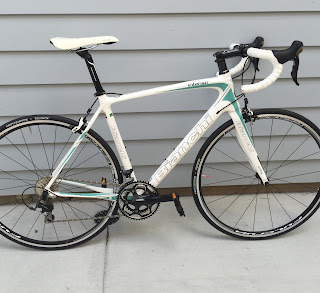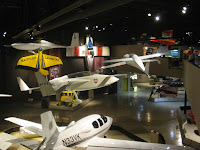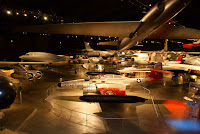In terms of equipment, I didn’t find much to differentiate the various manufacturers’ offerings around the price point I was looking at: all feature carbon-fibre forks and frames, alloy wheels, and conventional rim brakes. The Shimano 105 compact groupset is ubiquitous. Technical differentiators seemed to be mostly at the detail level: this bike is a little cheaper because it has the Shimano gears but not the Shimano shifters; that bike has some special vibration-dampening technology in it; this one has a saddle made by a specialist manufacturer rather than in-house by the bike manufacturer. The final decision was not going to be made on detail items like this.
The hunt
The first thing I learned about my criteria list was that I needed to let go of my preference for a step-through frame. Carbon road bikes with step-through frames simply don't exist (if you know better, I'm dying for you to correct me!) With that criterion eliminated, I was left searching for a light and pretty road bike optimised for endurance. Surely that was a more achievable goal?
Well, maybe.
I started out with an impression of road bikes as very brutish-looking: all straight lines and harsh angles. And while this is certainly true of a lot of what's out there, the more I looked, the more exceptions to the rule I found. So, the second thing I learned is that there’s much more variety in road bikes than I had thought, and that, while none of them looked as attractive to me as my cruiser does, I felt increasingly confident that I’d be able to find a bike to love.
The next step was to get to some shops and actually try out some of the alternatives. I made a list of retailers around Brisbane that had picked up favourable comments online and started visiting them. These included:1
- Bike Obsession (CBD)
- Epic Cycles (Paddington)
- 99 Bikes (Fortitude Valley)
- Lifecycle (CBD)
In general, I found the whole in-person shopping experience to be a really, really positive one. Everywhere I went, salespeople were knowledgeable, friendly, and never too pushy. I got the opportunity to sit on many different bikes and even try out a few. That was an experience! Coming from my commuter onto a carbon-fibre road bike less than half its weight, I was reminded of something that World War II flying ace Adolf Galland said after testing one of the world’s first jet fighters: “Es ist, als wenn ein Engel schiebt!”2 — “It’s as if an angel is pushing!” On this bike, I could actually accelerate up hills! Moving the pedals felt almost effortless; it reminded me of exercising on an elliptical machine at the gym with its resistance dialled right down.
I was measured up by most of the places I visited, and the various systems and methods they used produced recommendations of frame sizes in the 56cm to 58cm range. Of the bikes I actually sat on, the lower end of this band felt much better to me, with my favourites being, in order:
- a Merida Ride (size L, equivalent to 56cm)
- a Cannondale Synapse (56cm)
- a Bianchi Infinito (57cm)
By now, however, I was noticing something. Henry Ford famously remarked of his Model T, “Any customer can have a car painted any colour that he wants so long as it is black.”3 In the price range I was looking at, the same seems to hold true of bikes: choices are very limited in anything other than black or dark grey. Usually matte black or matte dark grey. Blergh.
Unless... I also looked at bikes marketed to women, as I did with my cruiser. I’d seen these while I hunted in vain for a step-through frame. Now, it seemed that if I wanted a bright, pretty road bike, I’d be revisiting the ladies’ section.4 So be it. The problem is almost reversed there: just about every bike is white; cheeriness comes mostly via accent colours. At least the white of a carbon-fibre bike is the bright, clean, smooth whiteness shared by other graceful vehicles like sailplanes and yachts.
In turn, looking at these bikes introduced another complication: I soon discovered that many of the ones I liked were only available in sizes too small for me! The range of “ideal” frame sizes generated at the shops and the calculators I found online suggested to me that there is a certain amount of leeway here, well within the range of sizes available in seatposts and stems. Still, I had to reluctantly disqualify a few models whose maximum size was more than 2cm smaller than my 56-cm ideal (including the prettiest bike on the shortlist). I also disqualified a couple of bikes I’d found on line where the manufacturer didn’t seem to have a point of presence in Australia. I didn’t want problems with parts and servicing later.
By now, the shortlist of bikes looked like this (items in red I considered show-stoppers, items in orange I considered warning bells):
| Bike | Attractive Frame? | Attractive Colour? | Largest Size | Local Dealers? | Comments | ||
|---|---|---|---|---|---|---|---|
|
Yes | Yes | 55cm | Yes | The equivalent “unisex” (ie, andronormative) model goes up to 59cm and is available in... black. “Unisex” Intenso models with more expensive groupsets are also available in Celeste (Bianchi’s signature blue-green) and white (although with a less attractive finish than the Dama Bianca has). |
||
|
No | No | 61cm | Yes | At least black isn’t the only option for this bike—they make it in orange too! (Not that I’d buy it in that orange.) |
||
|
Yes | Yes | 54cm | No | Very pretty | ||
|
Yes | No | 56cm | No | |||
|
Yes | No | 50cm | Yes | |||
|
Yes | Yes | 52cm | Yes | Gorgeous accent colours! The equivalent “unisex” model goes up to 61cm and is available in... black (also with gorgeous accent colours, but still!) |
||
|
Yes | Yes | 48cm | Yes | Prettiest of them all, I think | ||
| No | No | 62cm | Yes | “Unisex” design. To me, the least pretty bike on the whole list, but so comfortable! | ||
|
Yes | Yes | 55cm | Yes | The only bike on this list to have the Ultegra groupset. The equivalent “unisex” model goes up to 61cm and is available in... black. | ||
|
Yes | Yes | 60cm | Yes | “Unisex” design | ||
|
Yes | Yes | 57cm | Yes | |||
|
Yes | No | 54cm | Yes | Also very pretty |
So, it came down to the Bianchi Intenso Dama Bianca, the Norco Valence Forma, the Orbea M20, or the Specialized Ruby. I got to test-ride close relatives of the Bianchi and the Specialized, and much preferred the feel of the Bianchi. The Specialized put a lot of pressure on the heels of my hands for some reason, and I didn’t enjoy it at all. And it was on the Bianchi that I had my “an angel is pushing” experience.
I’ll also admit that the Bianchi brand appealed to me very much. When I began my search, the only one of the brands on the short list I’d even heard of was LaPierre, and that only because a friend owns one. As I researched and read, the Bianchi story really appealed me and I soon knew that this is a marque I would be proud to own. (Just as the Specialized story did not appeal to me.) So, having already fallen in love with the looks of the Intenso Dama Bianca and the heritage of the Bianchi brand, plus a successful test ride of a similar bike, I didn’t feel the need to track down a Norco or Orbea to try out.
In the balance between features, fit, fashion, and finance I was most willing to compromise on the fit. Compromising on features would probably have meant abandoning the idea of a carbon bike and choosing a pretty bike with an aluminium frame like the Bianchi Via Nirone: considerably cheaper, but almost a kilogramme heavier than the Intenso. Compromising on fashion would have left me with a bike I could never look at without wishing it looked half as good to me as the Dama Bianca that I didn’t buy. And I really didn’t have the money to spend to go to the next tier up, or to buy a “unisex” Intenso and have it resprayed in a colour scheme I actually liked (I had this priced — it would be about $1000).
So the Intenso Dama Bianca it was, in the full knowledge that getting the bike I wanted meant deliberately buying one a size too small and trusting a bike fitter to close the gap for me.
Making her mine
The next hurdle was that the Intenso Dama Bianca was sold out from the local Bianchi dealers. New stock was expected, but not for a few months, and the price was expected to be a lot higher than last year's price. Bugger.
Just as I was contemplating what to do next, an incredible series of coincidences led me to the partner of a friend of a friend who had exactly the bike I was looking for sitting in their garage. Purchased nearly a year ago with the best of intentions, it had been ridden exactly twice! Money changed hands and we both walked away happy.
Finishing touches
During my search for a bike, the team at Epic Cycles at Paddington had really gone the extra mile to try and find me a bike I’d like. So although I didn’t buy from them in the end, I knew which business I wanted to provide service and support for my new bike in the long term. I took it in there for a mechanical once-over and bike fit. As expected, as soon as their fitter got me up on the bike on an indoor trainer, she frowned and said “It’s too small!” So we had a good chat why I’d chosen a bike too small, my expectations, and her reservations about the limitations of this approach.
As I had anticipated, a longer stem and taller seatpost were needed, but the fitter also found that the seatpost needed some extra setback too. She ordered those parts in, and to make the bike feel a whole lot better for me in the meantime, she dropped the handlebars as low as they would go, and raised the existing seatpost as high as it would. I was actually very surprised what a difference these centimetres made, especially at the handlebars.
A few days later, the new stem and seatpost had arrived in store and I took the bike back to have them fitted. Seeing the parts confirmed again for me that I had made the right choice with Epic Cycles — the fitter had completely understood what I wanted in this bike. The stem was an authentic Bianchi part5, but was not only a better size: it replaced the original alloy stem with a carbon stem. And while there was no Bianchi seatpost with enough height and setback, the FSA part she chose was understated and plain-looking enough to be completely unobtrusive on the bike, and also replaced alloy with carbon. Exactly the choices I would have made for myself. With a final caveat about the limitations of the approach (both the longer stem and large setback affect steering in their own ways) we were done!
I had been looking for another bike that would send my heart racing, and this Dama Bianca certainly does that. I would absolutely make the same choices and same compromise again.
Riding the “white lady”
When I first test-rode a road bike, it seemed to me that I was going to have a whole lot of re-learning to do. It felt like a different type of vehicle — not a bicycle at all (when your entire frame of reference for “bicycle” is a cruiser!) I found it a bit scary to feel perched so high off the ground, and intimidated by just how quickly the bike picked up speed. A few short trips and one 90-minute ride with the Dama Bianca has started to transmute raw fear into a kind of fearful respect.My speed on the cruiser is limited by how fast I can pump my legs against the resistance of the bike’s weight and mechanical friction, plus the aerodynamic drag of my upright body. My speed on the road bike is presently limited by my confidence in my bike-handling skills and my fear of serious injury. I have not yet explored the top of the gear range, even on stretches where I know my legs could take me further up there.
It’s also a whole lot less comfortable than my cruiser, confirming my decision to keep commuting on my first bike. Riding the cruiser now feels like rolling a big, comfy, favourite armchair down the street, and the sprung, leather Brooks saddle feels positively luxurious.
The most immediate change in my riding has been re-learning starting and stopping. I can no longer just put a foot down: the ground is out of reach. Fortunately, I found a really helpful article and video on-line to show me what to do. I first practiced these techniques on the cruiser, whose greater inertia and friction made it easier to learn them before I transferred the skill to the road bike. I wouldn’t say that it’s second nature to me yet on either bike, but I’m getting better.
Learning to manage the gears is challenging too: I’m used to being able to look down at the thumb-shift lever and see which gear I’m in. Not so on the road bike, so I have to mentally update that information as I shift up and down. I’ve only had one fall from this bike so far, and that came from forgetting what gear I was in, and then actually shifting the gears in the wrong direction as I rode up a hill, until I lost speed and stability and fell over. Now I just remember: big levers select bigger chainring or cogs, little levers select littler chainring or cogs!
The future
I suspect padded shorts are going to be necessary if I’m going to spend any serious hours on this bike. Ninety minutes the other weekend had me really sore for the first time in my cycling experience. Not even five-hour rides on the cruiser had done that.As my confidence at handling this bike picks up, I will switch over to clipless pedals. I’m interested in the Shimano Click’r system as a way to get started, with its reputed ease of unclipping (like probably every other n00b, my biggest anxiety about clipless pedals is being unable to free a leg to prevent a fall) and its pedals that can be used as platform pedals with ordinary shoes.
I’m looking forward to years of fun and adventures with my Dama Bianca. If the day ever comes to replace her, I'll be hoping there will be better-looking, more colourful bikes in larger sizes than there are today!
1. Other stores that made the short list based on good reputations, but which I didn’t actually get to visit in my search included:
- Fusion Cycles (Fortitude Valley)
- Graceville Bike Company (Graceville)
- River City Cycles (Yeronga)
3. In Ford's autobiography My Life and Work, 1922, p.72
4. The existence of this category also demands a post on the rampant androcentrism and casual sexism of how bicycle manufacturers market their products. Later.
5. Well, Bianchi-branded and -coloured FSA, like the original equipment on Bianchi bikes.


















.jpg)



.jpg)



.jpg)


.jpg)


